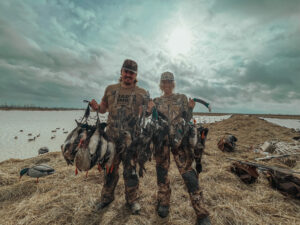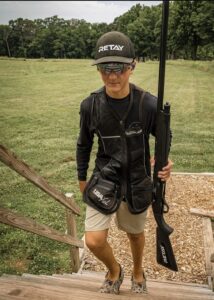
By : Justin Hunold

In a lot of the country, we have had a spotty winter. A little less cold and snow makes many of us a little more fired up for spring turkey hunting. Maybe you have some destination hunts in mind, maybe a guided Osceola hunt in Florida, maybe chasing some Rio’s in Texas? Those are likely happening on private land, and might even be guided. For many of us though we are hunting turkeys on public land. Here are some public land turkey tips that have led to Public land turkey hunting success stories
Scouting

Finding turkey hotspots on public land in spring is the first challenge. With apps like Spartan Forge, we can find public land more efficiently than ever before. Now, that you’ve found that land you have to see if it makes sense to chase Toms there. That’s why I use the mapping apps to zoom in on areas that will be high-traffic for all turkeys.
I use the app and boot leather to find, trails/roads (especially dirt), ridge tops with mast trees, creek bottoms that hold moving water and cut fields. I plunge into these areas before the season. I’m not necessarily looking for Turkeys, although this is a sure indicator of birds, but sign like tracks in the mud or dirt, wing marks from early strutters, and scratching from the flocks digging around the underbrush to eat. You can do this on any public land and generally, you only need a few hours on any given day to make the trek across the landscape.
You may have noticed that I really focused on areas where a turkey would likely leave some tracks, be it mud, snow, or dirt. I also focus on areas that have food sources, turkeys are generalist omnivores and will eat fleshy plants, berries, nuts, grains, bugs, worms, snails, snakes, lizards and all sorts of other smaller animals. They also need to eat dirt and stones to help with proper digestion. This is why part of my focus is on creek beds, this terrain often houses all sorts of morsels for those birds.

One other colossal scouting tool I use is trail cameras. I have found pockets of birds in places that I would often write off when I run year-round trail cameras for deer. So when I am scouting I often have a couple of trail cams with me, along with water, a snack, and binos. I also carry a handgun in case snakes or a target of opportunity pops up. I do not call or try to get them to shock gobble when I am scouting. I am trying to be a ninja and make as little impact as possible.
Calling
Listen, I think I can call a bird with the best of em. I also love having every call known to man but lets remember these birds hear them all. Often after the opening week of the season, the Toms calm down on the gobbling end of things and come in quiet as a church mouse. So, how does a turkey hunter leverage calls in the best way?
Here is one of my Public land turkey hunting secrets, leave your locator at home. I’m not saying you should not ever use a crow call, owl hooter, or peacock scream to get a gobbler hammering, but I tend to travel the roads and ridges initiating the gobble with a few clucks and yelps from a mouth call. I learned this a long time ago from my Uncle Jeff. He killed more birds than the avian flu.
Another public land turkey hunting tactics for locating birds on windy days is to always have a box call handy. In order of use for me goes something like this, Mouth call, Pot Call, and then Box call. There is something about those windy days that makes a box call shine. I can locate with a box call on gusty spring mornings better than anything else. What makes this so effective is partially the tone of the calls in general, but I also believe that box calls are used less and less these days. Man, they’ve fooled birds for a long time and will continue doing so.
Road Work
What makes Turkey hunting on public land for beginners so awesome is the fact that a lot of times you can put miles on a vehicle or your boots calling from the roadside or ridge tops, only setting up when you get a response. This active style of hunting tends to hook people for good and that’s the goal with a beginner, right?
The other cool thing about hunting public land turkeys without a guide for both vets and beginners is it’s generally a very condensed season in respect to length and legal hunting times. Normally spring turkey seasons last about a month and are limited to mornings. This is helpful for breaking in new folks because these aren’t all-day grind sessions like whitetail hunts and the length of seasons isn’t 90 days like waterfowl. You can go at your own pace.
Gear

Gear is often everyone’s favorite topic. The best gear for public land turkey hunting is often the simplest. I prefer a run-and-gun style hunt for public land turkey hunting strategies which means leaving the blind and full-body molded decoys at home. A nice purpose-built gun like Retay USA’s Turkey lineup is light and easy to carry, easy to hunt through timber with and packs a punch. I like a few different styles of mouth calls, one pot call, one box call, good boots, and a water bottle. Public land turkey hunting is more a game of Keep it simple stupid than anything else I do.
I have taken to using a simple sling pack from Trophyline for my spring hunting. I can carry everything I need in there. Another gear trick is moving to foldable, fabric and frame decoys like a Montana Decoy. I can sneak those into my smaller sling pack with no issues and they look great!
Finally, we will cover more Public land turkey hunting strategies and Public land turkey hunting tactics in upcoming pieces but as you know we like to start with a nice strong base to build from. Do you have any public land turkey secrets? Our secret is it’s way more fun to chase gobbler on this nation’s abundant and beautiful public lands than a hunter should have. So, just because you don’t have a nice private piece on lockdown or a guided hunt lined up doesn’t mean you can’t have a great time chasing birds on the land that you were born with!






